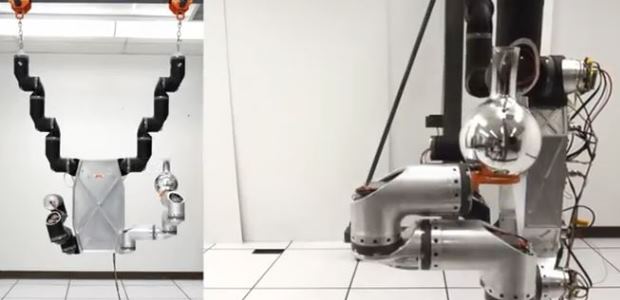
DARPA Robotics Challenge Trials Focused on Emergency Response Tasks
Teams will put their robots through eight tasks, ranging from driving a utility vehicle to carrying and connecting a fire hose, Dec. 20-21 at Homestead-Miami Speedway in Homestead, Fla.
The DARPA Robotics Challenge Trials are set for Dec. 20-21, giving teams from NASA, Carnegie Mellon University, and other organizations the opportunity to test their robots’ ability to accomplish eight specific emergency response tasks. The trials, open to the public and taking place at the Homestead-Miami Speedway in Homestead, Fla., also will include numerous demonstrations by the Miami-Dade Fire Rescue Hazmat Team, Florida urban search and rescue teams, and others.
The March 2011 Fukushima Daiichi nuclear plant crisis inspired DARPA to create this challenge, which is intended to accelerate the development of robots that could aid in response efforts after natural and man-made disasters. These robot prototypes will be tested on their ability to act semi-autonomously. The eight tasks are weighted equally, and as many as eight teams with the highest scores may continue to receive DARPA funding to prepare for the challenge finals in late 2014.
The tasks are:
- Drive and Exit Utility Vehicle: Operators must direct the robots to drive the vehicle safely despite occasional communications disruptions.
- Walk Across Rough Terrain: Robots must maintain their balance and identify safe routes.
- Remove Debris from Doorway: Robots must demonstrate a wide range of motion, along with balance and strength, to clear a path forward.
- Open Series of Doors: Robots must figure out how to align and move themselves as they open each door.
- Climb Industrial Ladder: The robots must safely navigate an 8-foot ladder and maintain their balance as they climb.
- Cut Through Wall: Robots must apply rigid force to hold a tool yet demonstrate the flexibility to smoothly manipulate it.
- Carry and Connect Fire Hose: The robots must identify the standpipe, transport the fire hose to it, and then attach the hose to a standpipe and open the spigot.
- Locate and Close Leaking Valves: Robots must identify the valves, determine which ones are open, and have sufficient range of motion to turn the valve wheels and close them.
The robots have 30 minutes to perform each task, and each team will attempt to complete each task once during the trials. "We know the robots are slow and unsteady at this point—they're much like a one-year-old human in terms of locomotion and grasping abilities and much farther behind that in brainpower," said Gill Pratt, DARPA's program manager. "The robots are taking 'baby steps' this year, but their performance will establish a reference point for what we can expect from the teams that return next year for the DRC Finals. We want that event to be much more difficult and force the robots to demonstrate useful capabilities in realistic disaster scenarios."